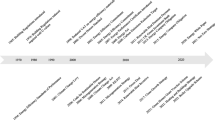Abstract
The Centers for Disease Control and Prevention began funding a Smoke Alarm Installation and Fire Safety Education (SAIFE) program in 1998. This program involves the installation of lithium-powered “10-year” smoke alarms in homes at high risk for fires and injuries. This study aimed to (1) determine among original SAIFE homes if the lithium-powered alarms were still present and functional 8–10 years after installation and (2) understand factors related to smoke alarm presence and functionality. Data on a total of 384 homes and 601 smoke alarms in five states were collected and analyzed. Only one-third of alarms were still functional; 37% of installed alarms were missing; and 30% of alarms were present, but not functioning. Alarms were less likely to be functioning if they were installed in the kitchen and if homes had a different resident at follow-up. Of the 351 alarms that were present and had a battery at the time of the evaluation, only 21% contained lithium-powered batteries. Of these, 78% were still functioning. Programs that install lithium-powered alarms should use units that have sealed-in batteries and “hush” buttons. Additionally, education should be given on smoke alarm maintenance that includes a message that batteries in these alarms should not be replaced. Lithium-powered smoke alarms should last up to 10 years if maintained properly.
Similar content being viewed by others
References
Karter, M. J. (2008). Fire loss in the United States during 2007. Quincy, MA: National Fire Protection Association.
Roberts, I., & Power, C. (1996). Does the decline in child injury mortality vary by social class? A comparison of class specific mortality in 1981 and 1991. BMJ, 313, 784–786.
Ahrens, M. (2004). U.S. experience with smoke alarms and other fire alarms. Quincy, MA: National Fire Protection Association.
Istre, G. R., McCoy, M. A., Osborn, L., Barnard, J. J., & Bolton, A. (2001). Deaths and injuries from house fires. New England Journal of Medicine, 344, 1911–1916.
Shenassa, E. D., Stubbenick, A., & Brown, M. J. (2004). Social disparities in housing and related pediatric injury: A multilevel study. American Journal of Public Health, 94, 633–639.
Warda, L. J., & Ballesteros, M. F. (2007). Interventions to prevent residential fire injury. In L. S. Doll, S. E. Bonzo, J. A. Mercy, & D. A. Sleet (Eds.), Handbook of injury and violence prevention (pp. 97–115). New York, NY: Springer.
Mallonee, S., Istre, G. R., Rosenberg, M., Reddish-Douglas, M., Jordan, F., Silverstein, P., et al. (1996). Surveillance and prevention of residential-fire injuries. New England Journal of Medicine, 335, 27–31.
DiGuiseppi, C., Roberts, I., Wade, A., Sculpher, M., Edwards, P., Godward, C., et al. (2002). Incidence of fires and related injuries after giving out free smoke alarms: Cluster randomized controlled trail. BMJ, 325, 995.
Harvey, P. A., Aitken, M., Ryan, G. W., Demeter, L. A., Givens, J., Sundararaman, R., et al. (2004). Strategies to increase smoke alarm use in high-risk households. Journal of Community Health, 29, 375–385.
Ballesteros, M. F., Jackson, M. L., & Martin, M. W. (2005). Working toward the elimination of residential fire deaths: The Centers for Disease Control and Prevention’s Smoke Alarm Installation and Fire Safety Education (SAIFE) program. Journal of Burn Care and Rehabilitation, 26, 434–439.
Mickalide, A., & Validzic, A. (1999). Smoke alarm maintenance of low-income families. American Journal of Public Health, 89, 1584.
Thompson, C. J., Jones, A. R., Davis, M. K., & Caplan, L. S. (2004). Do smoke alarms still function a year after installation? A follow-up of the Get-Alarmed Campaign. Journal of Community Health, 29, 171–181.
Shults, R. A., Sacks, J. J., Briske, L. A., Dickey, P. H., Kinde, M. R., Mallonee, S., et al. (1998). Evaluation of three smoke detector promotion programs. American Journal of Preventive Medicine, 15, 165–171.
Lee, A. (2002). Preliminary test results on lithium batteries used in residential smoke alarms. Washington, DC: U.S. Consumer Product Safety Commission.
Thompson, N. J., & McClintock, H. O. (1998). Demonstrating your program’s worth: A primer on evaluation for programs to prevent unintentional injury. Atlanta, GA: Centers for Disease Control and Prevention, National Center for Injury Prevention and Control.
Acknowledgments
The authors would like to thank Mary Borges from the Washington Department of Health, Robert McCool from the Kentucky Department of Health, Pam Archer from the Oklahoma State Department of Health, Steve Davidson from the Georgia Department of Health, and Lenny Recupero from the Virginia Department of Health, and to all the local fire departments for their assistance provided during this evaluation.
Disclaimer
The findings and conclusions in this report are those of the authors and do not necessarily represent the official position of the Centers for Disease Control and Prevention.
Author information
Authors and Affiliations
Corresponding author
Rights and permissions
About this article
Cite this article
Jackson, M., Wilson, J., Akoto, J. et al. Evaluation of Fire-Safety Programs that use 10-Year Smoke Alarms. J Community Health 35, 543–548 (2010). https://doi.org/10.1007/s10900-010-9240-y
Published:
Issue Date:
DOI: https://doi.org/10.1007/s10900-010-9240-y




